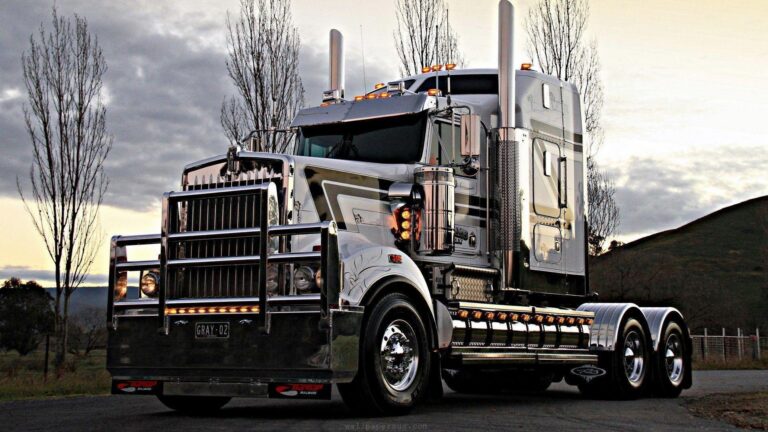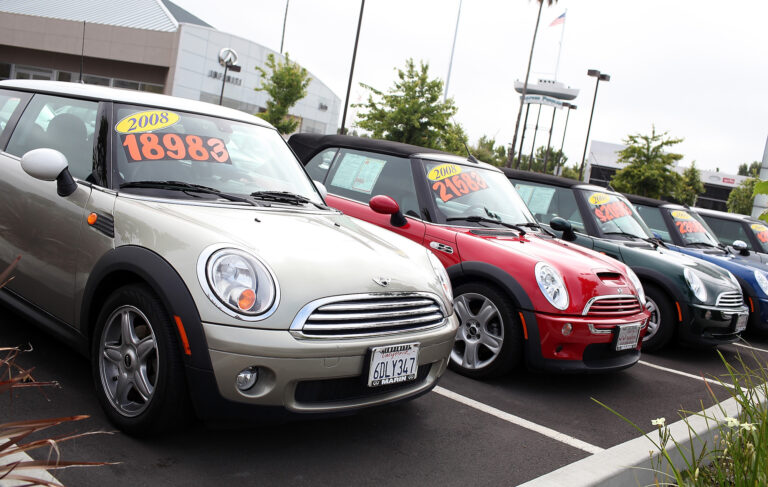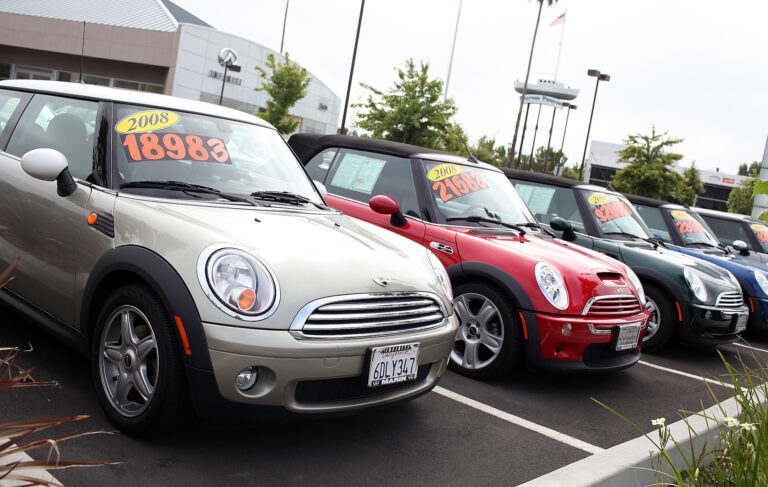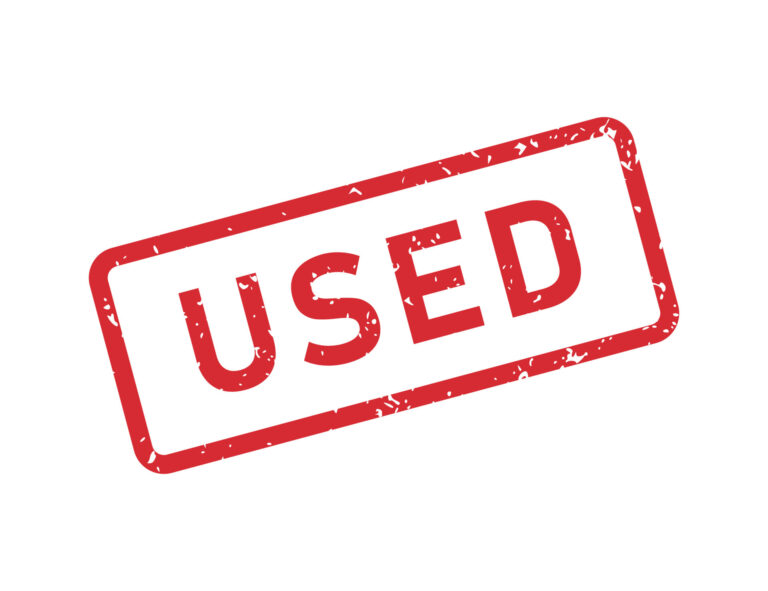U-Haul Car Hauler: Your Comprehensive Guide to Safe and Efficient Vehicle Transport
U-Haul Car Hauler: Your Comprehensive Guide to Safe and Efficient Vehicle Transport cars.truckstrend.com
Moving across town or across the country often involves more than just relocating household goods; it frequently means transporting vehicles as well. For many, the idea of driving a second car for hundreds or thousands of miles is daunting, if not impractical. This is where the U-Haul Car Hauler steps in as an indispensable solution. Far more robust and versatile than a simple tow dolly, the U-Haul Car Hauler is a full-platform, tandem-axle trailer designed to safely and securely transport a wide array of vehicles, ensuring all four wheels are off the ground. It offers peace of mind, reduces wear and tear on your towed vehicle, and provides an efficient, do-it-yourself alternative to professional auto transport services. For anyone embarking on a move with a vehicle in tow, understanding the capabilities, requirements, and best practices of a U-Haul Car Hauler is crucial for a smooth and stress-free journey.
Understanding the U-Haul Car Hauler
U-Haul Car Hauler: Your Comprehensive Guide to Safe and Efficient Vehicle Transport
The U-Haul Car Hauler is a purpose-built trailer designed for comprehensive vehicle transport. Unlike a tow dolly, which only lifts the front wheels of a vehicle, the car hauler features a full platform that supports all four wheels, making it suitable for virtually any passenger vehicle, including those with all-wheel drive (AWD) or four-wheel drive (4×4) systems, which cannot be safely towed with a dolly.
Key Features that Set it Apart:
- Tandem Axle Design: Two axles provide greater stability, better weight distribution, and increased carrying capacity compared to single-axle trailers.
- Low Deck Height: Facilitates easier loading and a lower center of gravity for improved towing stability.
- Integrated Ramps: Sturdy, slide-out ramps allow for straightforward loading and unloading of your vehicle.
- Heavy-Duty Tie-Down Straps: Specifically designed to secure the front wheels of the towed vehicle, ensuring it remains firmly in place during transit.
- Surge Brakes: Most U-Haul Car Haulers are equipped with hydraulic surge brakes. These brakes activate automatically when the towing vehicle slows down, providing essential stopping power for the combined weight of the trailer and towed vehicle, eliminating the need for an external electric brake controller.

Benefits of Choosing a U-Haul Car Hauler:
- Superior Safety: By keeping all four wheels off the ground, the car hauler eliminates concerns about transmission damage, mileage accumulation, or uneven tire wear on the towed vehicle.
- Unmatched Versatility: It can accommodate a wide range of vehicles, from compact cars to many SUVs and light trucks, provided they meet the weight and dimension requirements. Crucially, it’s the only U-Haul option for safely towing AWD/4×4 vehicles.
- Convenience and Control: Renting a car hauler puts you in charge of your vehicle’s transport schedule and route. U-Haul’s extensive network allows for convenient pick-up and drop-off locations, whether for in-town or one-way rentals.
- Cost-Effectiveness: For many, renting a car hauler is a more economical choice compared to hiring professional auto transport services, especially for shorter to medium distances.

Is a U-Haul Car Hauler Right for You? Key Considerations
Before you reserve a U-Haul Car Hauler, it’s essential to assess if it’s the most suitable option for your specific needs. This involves evaluating both the vehicle you intend to tow and the vehicle that will do the towing.

1. Towed Vehicle Compatibility:
- Weight Limits: The most critical factor. U-Haul Car Haulers are designed to transport vehicles weighing up to approximately 5,290 lbs (2,400 kg). Always check your vehicle’s curb weight (found in the owner’s manual or on a sticker inside the driver’s door jamb) to ensure it’s within this limit.
- Dimensions: Your vehicle must fit within the hauler’s dimensions. Generally, this means a maximum outside tire width of 79 inches and a maximum wheelbase of 133 inches. Vehicles with extremely low ground clearance might also pose a challenge for loading.
- Drivetrain: As mentioned, car haulers are ideal for FWD, RWD, and crucially, AWD/4×4 vehicles, as all wheels are lifted from the road.
2. Towing Vehicle Requirements:
- Type: Your towing vehicle must be a truck or SUV. U-Haul explicitly prohibits towing car haulers with passenger cars, vans, or unibody SUVs (like many crossovers) unless they meet specific, stringent weight requirements.
- Curb Weight: The towing vehicle’s curb weight must be at least 3,500 lbs (approximately 1,588 kg) and typically needs to be 750 lbs heavier than the vehicle being towed for optimal safety and stability. For heavier towed vehicles, the towing vehicle may need to be significantly heavier.
- Hitch and Wiring: Your towing vehicle must have a properly installed hitch receiver (typically 2-inch or 2-5/16-inch ball, U-Haul usually uses a 2-inch ball) and a working 4-pin or 7-pin wiring harness for trailer lights (brake lights, turn signals, running lights).
- Tires and Brakes: Ensure your towing vehicle’s tires are in good condition and properly inflated, and that its braking system is well-maintained. While surge brakes on the hauler assist, your towing vehicle’s brakes are still paramount.
3. Driver Experience:
- Towing a large car hauler requires a certain level of comfort and experience. The combined length and weight will significantly alter your vehicle’s handling, braking distances, and turning radius. If you’re new to towing, consider practicing in a safe, open area before embarking on your trip.
4. Distance and Road Conditions:
- For long distances, a car hauler is almost always preferred over a tow dolly due to reduced wear on the towed vehicle and better stability. Consider the terrain and weather conditions you might encounter; heavy loads can be more challenging in mountainous regions or adverse weather.
How to Rent and Use a U-Haul Car Hauler: A Step-by-Step Guide
Renting and using a U-Haul Car Hauler involves several crucial steps, from reservation to return. Following these guidelines meticulously will ensure a safe and successful transport.
1. Reservation:
- Online or In-Person: You can reserve a car hauler through the U-Haul website or by visiting a U-Haul location.
- Provide Details: Be prepared to provide accurate information about both your towing vehicle (make, model, year, curb weight, hitch type) and the vehicle you intend to tow (make, model, year, curb weight, drivetrain). This allows U-Haul to verify compatibility and recommend the correct equipment.
2. Pickup and Inspection:
- Thorough Inspection: Before leaving the U-Haul center, thoroughly inspect the car hauler. Check the tires for proper inflation and wear, ensure all lights (brake, turn, running) are functional, verify the ramps slide out smoothly, and confirm the tie-down straps are present and in good condition. Report any issues to U-Haul staff immediately.
3. Hitching Up the Car Hauler:
- Level Ground: Position your towing vehicle and the car hauler on level ground.
- Connect Coupler: Lower the trailer coupler onto your towing vehicle’s hitch ball. Ensure it’s securely latched and that the safety pin or lock is engaged.
- Safety Chains: Cross the safety chains under the coupler and attach them to the designated points on your towing vehicle’s hitch receiver.
- Wiring Harness: Connect the lighting harness to your towing vehicle’s electrical connector. Test all lights (running lights, brake lights, left/right turn signals) to ensure they are working correctly.
4. Loading the Towed Vehicle:
- Positioning: Ensure the car hauler is on level, stable ground. Engage the parking brake of the car hauler (if equipped) and the towing vehicle.
- Extend Ramps: Slide out both loading ramps from the rear of the trailer.
- Slow and Steady: Slowly drive the vehicle to be towed onto the car hauler. Guide it carefully, ensuring it is centered on the platform. Drive it forward until the front wheels are positioned securely against the front stops, just past the front fenders of the trailer.
- Parking Brake: Once the vehicle is properly positioned, engage its parking brake. Remove the keys from the ignition.
5. Securing the Vehicle:
- Wheel Straps: Use the provided heavy-duty ratchet straps to secure the front wheels of the towed vehicle. Ensure the straps are cinched down tightly, applying firm pressure over the top of the tires. The straps should be centered on the tires, and the ratchets should be fully engaged and locked.
- Double Check: Before moving, double-check all connections: the hitch coupler, safety chains, electrical wiring, and especially the wheel straps.
6. On the Road:
- Practice: If you’re new to towing, practice turning, braking, and backing up in a large, empty parking lot.
- Speed Management: U-Haul recommends a maximum speed of 55 mph (88 km/h) when towing. Always obey posted speed limits and adjust your speed for weather, road conditions, and traffic.
- Increased Stopping Distance: You will need significantly more distance to stop. Anticipate braking well in advance.
- Wide Turns: Make wider turns to account for the trailer’s length.
- Mirror Checks: Frequently check your side mirrors to monitor the trailer and towed vehicle. Consider using extended mirrors if your visibility is limited.
- Regular Stops: During long trips, pull over periodically (every 1-2 hours) to re-check the security of your hitch connection, safety chains, and especially the wheel straps.
7. Unloading and Return:
- Reverse Process: Unloading is the reverse of loading. Ensure the car hauler is on level ground, extend the ramps, release the wheel straps, and slowly drive the vehicle off the trailer.
- Cleanliness: Return the car hauler to the designated U-Haul location in a reasonably clean condition.
Tips for a Smooth and Safe Tow
- Pre-Trip Inspection is Paramount: Before every leg of your journey, inspect your towing vehicle’s tires (pressure, tread), fluid levels, and lights. Re-check the car hauler’s tire pressure, lights, and especially the security of the wheel straps and hitch connection.
- Weight Distribution is Key: Ensure the towed vehicle is loaded correctly on the car hauler, with its weight distributed evenly and primarily over the trailer’s axles. Improper weight distribution (too much tongue weight or too little) can lead to dangerous trailer sway.
- Maintain Slower Speeds: Resist the urge to rush. Slower speeds provide more control and reaction time.
- Anticipate and Brake Early: Begin braking earlier than you normally would, and use smooth, controlled braking actions. Avoid sudden stops.
- Account for Wind: Strong crosswinds can significantly affect towing stability. Slow down and maintain a firm grip on the steering wheel.
- Fuel Economy Drop: Expect a significant decrease in your towing vehicle’s fuel efficiency. Plan your fuel stops accordingly.
- Avoid Overloading: Never exceed the weight limits for the car hauler or your towing vehicle.
- Stay Hydrated and Rested: Long-distance towing is mentally and physically demanding. Take frequent breaks.
Potential Challenges and Solutions
While U-Haul Car Haulers are designed for ease of use, challenges can arise. Being prepared can make all the difference.
- Challenge: Vehicle Does Not Fit/Too Heavy.
- Solution: Double-check all specifications (curb weight, width, wheelbase) before reserving. If your vehicle exceeds limits, you might need to consider professional auto transport services or a different towing solution (if available).
- Challenge: Trailer Sway.
- Solution: Often caused by improper weight distribution (too little tongue weight). Ensure the towed vehicle is positioned correctly on the hauler. Slow down immediately, hold the steering wheel straight, and avoid braking suddenly or steering sharply until sway subsides. Check tire pressures on both the towing vehicle and the trailer.
- Challenge: Difficulty Loading/Unloading.
- Solution: Ensure the car hauler is on firm, level ground. Use spotters if available. Drive slowly and deliberately. If low clearance is an issue, consider using additional blocks under the ramps to reduce the angle, but ensure stability.
- Challenge: Mechanical Issues with Trailer.
- Solution: U-Haul provides 24/7 roadside assistance. Pull over safely, call their support line, and describe the issue.
- Challenge: Inexperience and Lack of Confidence.
- Solution: Practice in a controlled environment. Watch U-Haul’s instructional videos. If you’re truly uncomfortable, consider hiring a professional.
U-Haul Car Hauler Estimated Price Guide
The cost of renting a U-Haul Car Hauler varies significantly based on several factors: rental duration, pick-up and drop-off locations (in-town vs. one-way), distance for one-way rentals, availability, and demand. The table below provides estimated price ranges, but it is crucial to obtain a precise quote directly from U-Haul for your specific needs.
| Rental Type | Duration | Estimated Price Range (USD) | Key Considerations |
|---|---|---|---|
| In-Town Rental | Daily | $50 – $80 | For local moves where the car hauler is picked up and returned to the same U-Haul location. Price is typically flat rate per day. |
| Weekly | $200 – $350 | Less common for car haulers, but some locations might offer extended local rentals. | |
| One-Way Rental | Per Trip | $200 – $800+ | Varies drastically based on distance (mileage), specific origin and destination cities, and demand for equipment on that route. Includes a set number of allowed days and mileage; exceeding these can incur additional fees. |
| Example: A 500-mile one-way trip might be $300-$500, while a 2,000-mile trip could easily be $600-$800+. | |||
| Additional Costs | |||
| Damage Protection | Optional | $10 – $25 per day | U-Haul offers various protection plans (e.g., Safemove, Safemove Plus) that cover damage to the U-Haul equipment. Highly recommended, as your personal auto insurance may not fully cover rental trailers. |
| Environmental Fee | Standard | $1 – $5 | A small, non-negotiable fee applied per rental. |
| Taxes | Varies | Varies by state/local tax | Applicable sales tax on the rental and any additional fees. |
| Fuel for Towing Vehicle | Variable | Significant | This is often the largest hidden cost. Towing a car hauler significantly reduces your towing vehicle’s fuel economy. Factor in substantial fuel expenses for your trip. |
| Equipment Add-ons | Optional | Variable | If you need a hitch installed, wiring harness, or other towing accessories, these are separate costs. |
Disclaimer: All prices are estimates and subject to change without notice. Prices can fluctuate significantly based on location, availability, demand, and specific rental terms. Always confirm current pricing and all associated fees directly with U-Haul when making your reservation.
Frequently Asked Questions (FAQ)
Q: What’s the main difference between a U-Haul Car Hauler and a Tow Dolly?
A: A U-Haul Car Hauler is a full-platform trailer that lifts all four wheels of the towed vehicle off the ground. A tow dolly only lifts the front two wheels. Car haulers are required for AWD/4×4 vehicles and generally preferred for longer distances, offering greater safety and reducing wear on the towed vehicle. Tow dollies are typically for FWD vehicles on shorter trips.
Q: Can I tow an AWD/4×4 vehicle with a U-Haul Car Hauler?
A: Yes, the U-Haul Car Hauler is the recommended and safest U-Haul option for towing all-wheel-drive (AWD) or four-wheel-drive (4×4) vehicles, as all four wheels are completely off the ground.
Q: What is the maximum weight a U-Haul Car Hauler can carry?
A: A U-Haul Car Hauler can typically carry a vehicle weighing up to approximately 5,290 lbs (2,400 kg). Always verify your vehicle’s curb weight to ensure it is within this limit.
Q: Do I need special insurance to rent a U-Haul Car Hauler?
A: While your personal auto insurance policy might extend some coverage to rental trailers, it’s highly recommended to consider U-Haul’s optional damage protection plans (like Safemove or Safemove Plus). These plans specifically cover damage to the U-Haul equipment, offering peace of mind that your personal policy might not provide.
Q: Can I rent a car hauler without also renting a U-Haul moving truck?
A: Yes, you can rent just the car hauler independently, provided your personal towing vehicle meets all of U-Haul’s safety and compatibility requirements (e.g., proper curb weight, hitch, and wiring).
Q: How fast can I drive with a U-Haul Car Hauler?
A: U-Haul strongly recommends a maximum speed of 55 mph (88 km/h) when towing any of their equipment. Always adhere to this recommendation and adjust your speed further based on road conditions, weather, and traffic.
Q: Do U-Haul Car Haulers have brakes?
A: Yes, U-Haul Car Haulers are equipped with hydraulic surge brakes. These brakes activate automatically when the towing vehicle slows down, providing essential stopping power for the trailer and its load. This system eliminates the need for an external electric brake controller in your towing vehicle.
Q: What if my towing vehicle doesn’t have a hitch or proper wiring?
A: U-Haul offers hitch installation and wiring services at many of its locations. You can schedule these services when you reserve your car hauler, ensuring your towing vehicle is fully prepared.
Concluding Summary
The U-Haul Car Hauler stands as a reliable, versatile, and cost-effective solution for transporting vehicles, whether it’s part of a major move or simply relocating a car. By lifting all four wheels off the ground, it provides superior protection for your towed vehicle and ensures a safer journey, particularly for AWD/4×4 models. While it requires careful planning, adherence to safety guidelines, and an understanding of towing dynamics, the comprehensive support and equipment provided by U-Haul empower individuals to confidently manage their vehicle’s transport. With thorough preparation and attention to detail, the U-Haul Car Hauler transforms the challenge of vehicle relocation into a manageable and secure DIY endeavor.






